Silver dishes: types, benefits and harms

Silver dishes have been known since ancient times. Today it has a special status, not everyone can afford to have such a set on the table due to its high cost. But is silver so useful and does it harm if you serve food in it?
A bit of history
Silver was of great value and aesthetic appeal in many ancient cultures, where it was used to make jewelry, dishes, figurines, and ritual items. Silver mines were opened in countries such as Greece, Spain, Italy. They often became the cause of warriors.
The use of silver as a crockery was most widespread between 1840 and 1940. During this time, the production and trade of silver items expanded significantly, so merchants could meet the growing demand.
During the Victorian era, silverware was an indispensable part of the fine dining table. It was necessarily used when serving during an official meal in the USA and Europe. Collections of silverware were highly valued and were often made to order. One such set sometimes contained up to 100 instruments.

Formal dinners in the late 1800s and early 1900s were lengthy, sometimes including 10 or more courses, each served in its own silverware. It was not unusual to use precious metal forks, spoons and knives.
Silver was used to make large forks, cake knives, carving knives, soup spoons, and gravy ladles. In addition to its pleasant aesthetic properties, the light weight and unique composition of silver made the metal an ideal choice for festive serving.Often, items were decorated with hand-carved and ivory inserts.
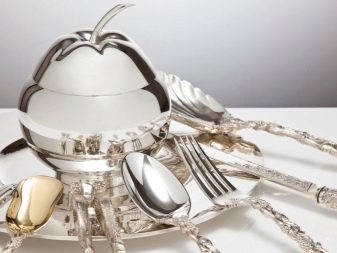
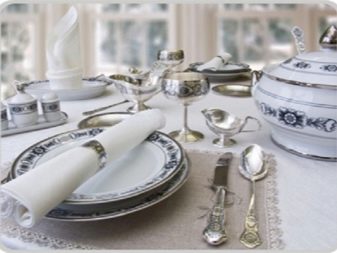
In ancient devices there was always a tea or coffee pair, often such products were engraved, for which they were appreciated by jewelers.
Benefit and harm
Silver dishes have unique beneficial properties for humans.
- Absence of bacteria. Silver can have a detrimental effect on bacteria; during wars, it was used to disinfect water. That is why it is advised to give food and drinks from such dishes to children. Moreover, such cutlery is easier to care for.
- Boosts immunity. It is said that when hot or warm food is served on the metal, its molecules are transferred to the food. Silver, with its antibacterial effect, helps to boost immunity.
- Non-toxic metal. Silver is non-toxic, so there should be no concern when eating food from such utensils.
- Maintains and restores the freshness of water and liquids. It is not for nothing that it is known from history that water and wines retained their taste and did not deteriorate if kept in a silver container.
- Cools the body... Silver can cool the body, so the water seems cooler. In addition, most edema leg bracelets are made from this metal.
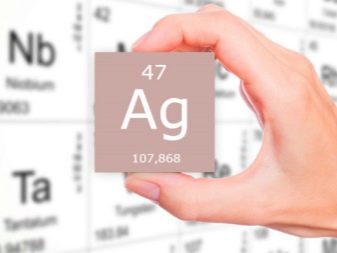
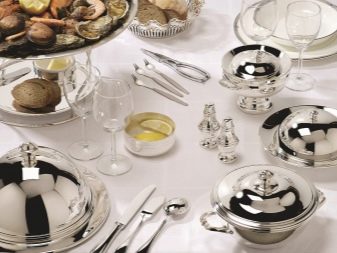
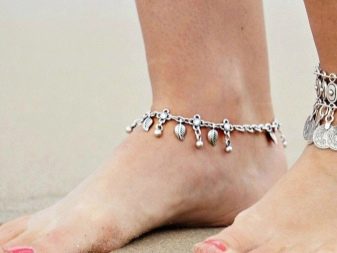
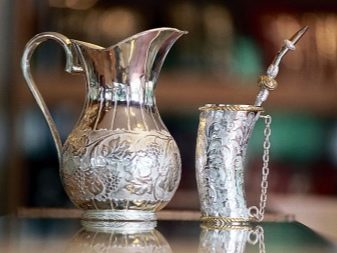
Doctors advise using silver jewelry for those who have problems with the cardiovascular system. Also, they will not be superfluous in identifying eye diseases, frequently recurring headaches, depression, excessive sweating. In contact with the human body, the metal transfers positive ions to it, which give an imperceptible impulse to the cells.
With the advent of science, most of the myths about the benefits of silver for the human body and in general have been dispelled, including the fact that it is able to keep water clean for a long time. It all started from the time when poison was the main weapon against the enemy. Then alchemists began to produce sulphide poisonous substances that could be detected in contact with silver.
Even if a person was poisoned slowly, poison accumulated in his body, jewelry made of precious metal began to darken in this case, which is why the nobility decided to use silver as the main metal for the production of dishes. However, today scientists have proven that metal ions, together with medications, enhance their positive effect on the human body.
Like any heavy metal, silver can build up in the body, which can cause poisoning.
This also applies to the uncontrolled use of "silver water", which leads to an overdose, and subsequently to:
- metabolic disorders;
- depression;
- nausea and headaches.




Metal is found in some foods that humans already consume. Among them:
- Dill;
- cucumbers;
- pumpkin;
- cabbage;
- meat.




Doctors and scientists have established the maximum permissible safe dose of metal - no more than 50 micrograms of silver per liter of liquid.
How to choose?
In the process of choosing, the buyer must immediately decide for what purpose he buys a set of silver dishes. If you intend to use it to serve dishes, then you need to look for the necessary product not in a jewelry store, but in a dishware.
Those that are on the shelves in jewelry stores are only suitable as a gift or decorative piece of furniture. Often, when identifying the composition of the alloy, it turns out that heavy metals are present in it, respectively, such a cutlery cannot come into contact with food, otherwise it can be poisoned.
Even when buying silverware, you will need to ask the seller quality certificate, where the composition of the alloy used should be indicated. There can be no question of any impurities and additional metals - they are harmful.
The higher the purity of the purchased silver, the better. Pay special attention to the coating, which can only be gilded.If it is lacquer, rhodium or blackening with enamel, then the product in question can only be used as a souvenir or interior decoration.
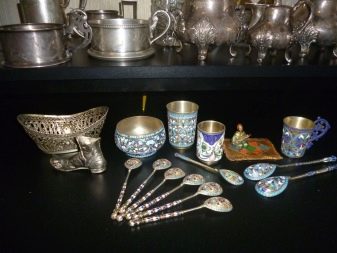

How to care?
Cleaning the silverware by hand takes the same amount of time as cleaning other kitchen utensils. First, fill the sink with warm water, add dishwashing soap. Pay particular attention to the temperature of the water, especially if large dishes have plastic handles.
Silverware is placed in the sink with soapy water and allowed to sit for a while. Then wash off the dirt with a soft sponge. If there are stuck food, then the devices should lie in the water for ten minutes. You cannot use an iron brush, a sponge, since silver is a soft metal that will lose its attractiveness from rough exposure. After cleaning, the dishes are rinsed under the tap and wiped with a soft towel. Silver-plated dishes are cleaned in the same way.
It is allowed to wash silver items in the dishwasher, but first remove food debris from the plates. Do not use detergents with acids in the composition. If there is a drying function, then you can dry the cutlery inside the dishwasher.
Often you have to deal with the problem of stains and smudges on silver plates and forks. They can be caused by mineral deposits or appear when silver is stored wet.
A good way to bring back an attractive look and clean up blackness at home is to dip a rag or tea towel in olive oil and rub the surface of the utensil with it.
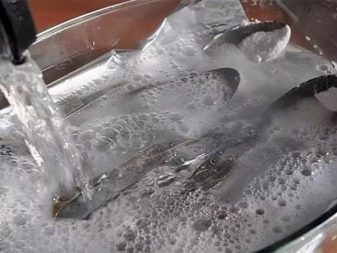
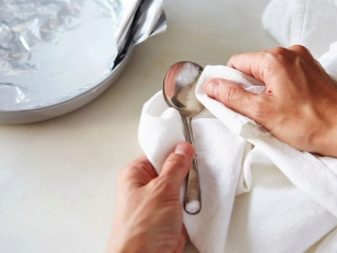
It will take about a teaspoon to tidy up the whole set.
You can use vinegar instead of oil. The rag should not be wet, just well soaked in vinegar, which does not need to be diluted with water. After that, the utensils can be rinsed with soap and plain water.
Another effective way to remove stains is to use baking soda, which is actually a versatile and cheap cleaning agent. It can replace vinegar, only you need to slightly dilute the powder with water.
It is necessary to give a few more expert advice on how to care for table silver.
- First of all, you cannot wrap metal products in plastic wrap. Silver care specialists say that while this method slows down tarnishing, plastic that adheres tightly can damage the finish, resulting in black spots that are nearly impossible to remove.
- Do not use elastic bands to secure the wrapper to the silver. Rubber can corrode metal even if it is separated from it by several layers of paper or cloth.
- With continued use, patina will appear on such devices - a distinctive feature of antiques.
- After use, the dishes must be washed, wiped and cleaned immediately.
- In some sets, silver knives have stainless steel blades. Care must be taken when cleaning such items, as an electrolytic reaction occurs when these two metals come into contact.

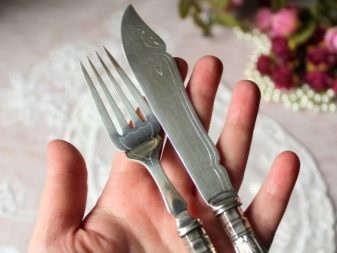
For the benefits and dangers of silverware, see the next video.








